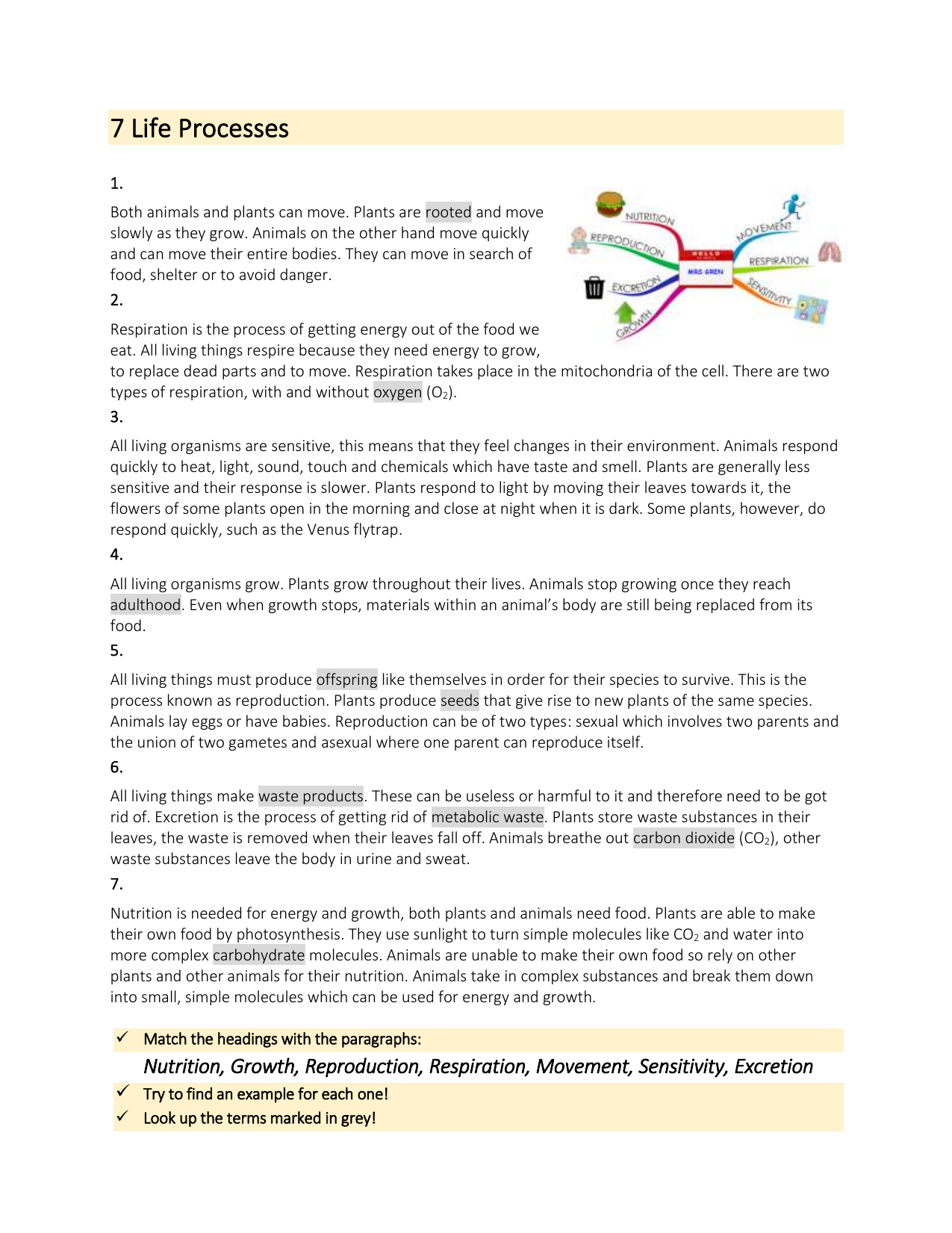

Metabolism is a broad term that includes all the chemical reactions that occur in the body. Even a single cell, if it loses its integrity or organization, will die. Each component has its own job to perform in cooperation with others. The following are a brief description of the life process: OrganizationĪt all levels of the organizational scheme, there is a division of labor. Disease such as cancer and death represent a disruption of the balance in these processes. All function together, in fine-tuned balance, for the well being of the individual and to maintain life. No part of the body, from the smallest cell to a complete body system, works in isolation. In humans, who represent the most complex form of life, there are additional requirements such as growth, differentiation, respiration, digestion, and excretion. The basic processes of life include organization, metabolism, responsiveness, movements, and reproduction. Life ProcessĪll living organisms have certain characteristics that distinguish them from non-living forms. During young adulthood, they normally operate with maximum efficiency and effectiveness. They gradually become less and less efficient and effective. During late maturity and old age the opposite is true. During childhood, body functions gradually become more and more efficient and effective. In general, the body performs its functions least well at both ends of life - in infancy and in old age. The body's ability to perform many of its functions changes gradually over the years. Its major activities or functions are responding to changes in the body's environment, exchanging materials between the environment and cells, metabolizing foods, and integrating all of the body's diverse activities. Homeostasis depends on the body's ceaselessly carrying on many activities. In his words, homeostasis "means a condition that may vary, but which is relatively constant." However, as Cannon emphasized, homeostasis does not mean something set and immobile that stays exactly the same all the time. "Standing or staying the same" then is the literal meaning of homeostasis. It comes from two Greek words - "homeo," meaning the same, and "stasis," meaning standing. Homeostasis is a key word in modern physiology. Cannon (1871-1945), suggested the name homeostasis for the relatively constant states maintained by the body. Later, an American physiologist, Walter B. He noted that body cells survived in a healthy condition only when the temperature, pressure, and chemical composition of their environment remained relatively constant. More than a century ago, French physiologist, Claude Bernard (1813-1878), made a remarkable observation. Survival depends on the body's maintaining or restoring homeostasis, a state of relative constancy, of its internal environment. Survival is the body's most important business. The body's functions are ultimately its cells' functions. Acknowledgements Body Functions & Life Process Body Functionsīody functions are the physiological or psychological functions of body systems.


 0 kommentar(er)
0 kommentar(er)
